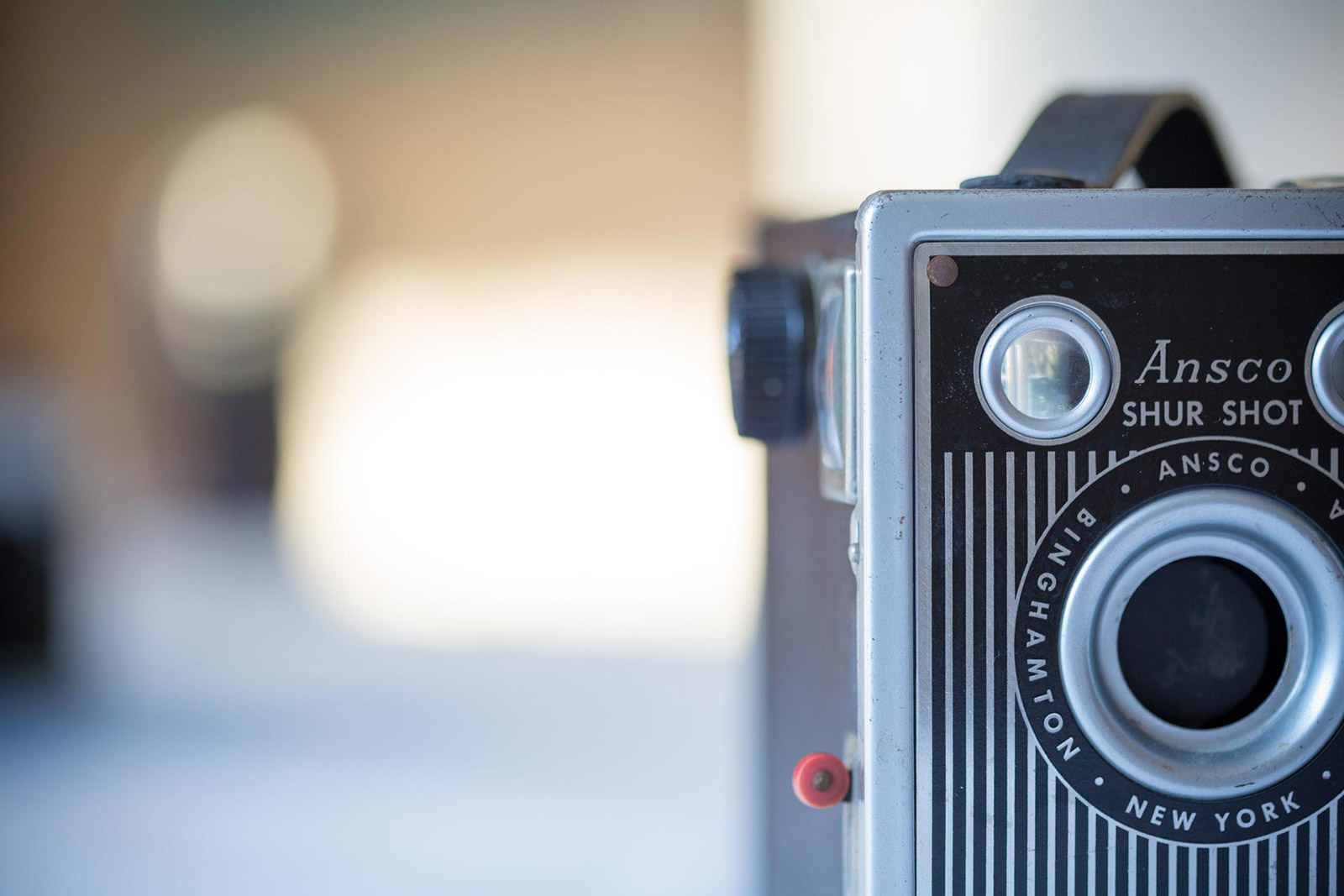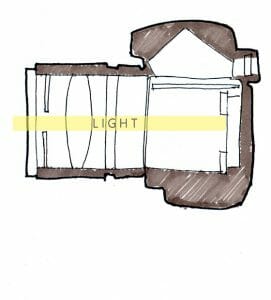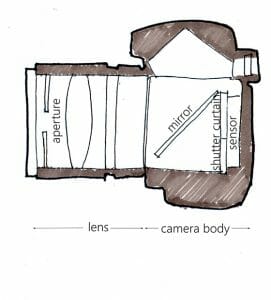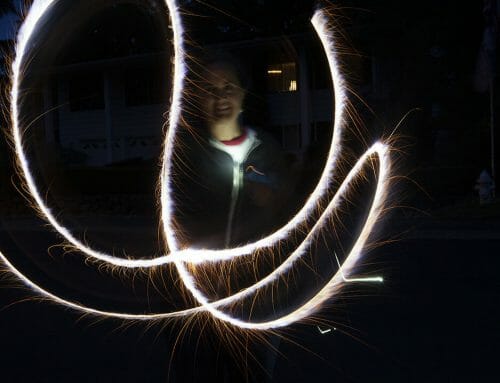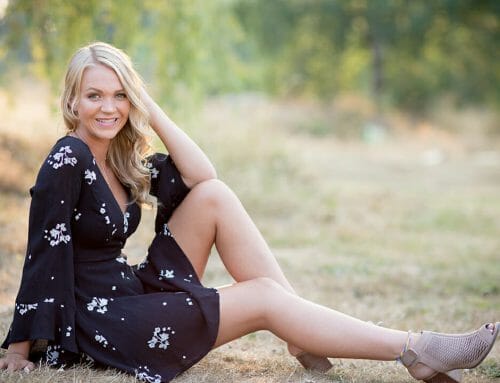When I teach my in person Basic Photography Classes, I like to show people my first film camera. I can take it apart and show people the inner workings! Understanding how your camera works and Photography Basics was easier to follow once I understood how all the pieces work together.
I’d just ask you to not get too caught up in the numbers. If you’re someone like me, who glazes over when I bunch of numbers are thrown at you, try to not hold on to that and just…well, maybe pour yourself a glass of wine or cup of tea and relax. We’ve got you!
The way a photo is created; i.e. the basic mechanics of how a camera works, has changed very little over time. Here’s a rough cross-section that I did (thank you Architecture school!) illustrating how light travels through a camera to start us out;
Camera Cross-section Sketch
Light travels through the lens of a DSLR*, the camera mirror in front of the shutter curtain quickly pops up and out of the way, then the shutter curtain opens and closes and exposes the sensor to light.
The Big Three
The lens controls the amount of light through the size of the APERTURE, the SHUTTER controls the length of time or speed the light is “on” and the ISO controls how sensitive the sensor is to light.
Aperture
The size of the lens opening or “Aperture” is measured in f-stops. Who knows why. Someone does. Some nerdy engineer who loves to do formulas in his (or her! Girls can be nerdy too!) head thought this one up! Because the larger the aperture opening, the smaller the number. Example; f2.8 is a large aperture opening and f22 is a small aperture opening. Read more about how your Aperture works here.
Shutter Speed
Shutter speed is measured at a fraction of a second. 1/4000th of a second is a very fast shutter. Whereas, 1/6th of a second is relatively slow. You can actually hear a slow shutter. Some cameras display a fraction for your shutter speed and others will just show the denominator. It’s a bit easier to comprehend than aperture in my opinion because the higher the number or fraction, the faster the shutter. Read more about why you should care about your shutter here.
ISO
ISO is also sometimes referred to as “film speed”…which is left over from the film days so can we should let go of calling it that already?! Also, ISO stands for International Standard of Operations. What?! That makes no sense!
Just ignore what it was called or its meaningless initials and know that it controls light by the sensitivity of your camera’s senor to light. If the sensor absorbs light quickly (high number, ex. 1600), it allows the camera to take photos in lower light but you sacrifice quality. If you can allow the camera to absorb light slowly (ex. 200), you will have a better quality image. If the camera sensor records the image quickly (ex. ISO 1600), it will allow you to shoot in lower light or with a faster shutter speed but it will reduce the quality of the image. The lack of quality shows up in what is called “grain” or “noise”. You can see this if you enlarge an image, particularly in shadows.
Metering
To understand basic photography, you also need to understand the role of your camera meter. The camera, if in an Auto or a semi-auto mode (Mode dial – P,S,A, or P,Tv,Av on Canon), uses the “Big Three” to control the exposure and determines the setting of each through a reading of light called the METER. The meter is usually (but not always!) follows what the camera is focusing on.
For example; if you’re taking a photo of your baby who is sitting up on a blanket in the grass in the shade of a tree but the background is in bright sun and the focus point is on your baby’s face, the camera will take the meter reading off of your baby’s face and adjust the camera settings to allow your baby’s face to be properly exposed which will likely mean that the background will be very bright or “over-exposed”. That’s an OK sacrifice however because your subject is properly exposed. But, let’s say the meter is set to read the whole frame and not follow the focus point, it will try to balance both the shadows and the highlights which will likely mean your subject, sitting in the shade with bright sun behind, will be “under-exposed”. It’s worth doing little research on your cameras focus controls and metering modes for this reason.
My personal preference for a meter setting on my Canon is the “Evaluative” meter setting. For Nikon is called “Matrix” and a few other brands its called “Multi”. This will give your focus point priority while still reading a bit of what is going on in the background. In high contrast situations, however, the spot meter is a great tool to learn more about. It will meter off what you are focusing on only and ignore what is going on in the foreground and background. For more info on how your camera meter works, check out this post.
*DSLR – Digital Single Lens Reflex; allows you to view through the lens and allows you to change out different lenses.
*Mirrorless uses digital technology for the view through the lens instead of the mirror that is in the DSLR cameras. Hence the name “mirrorless”.
